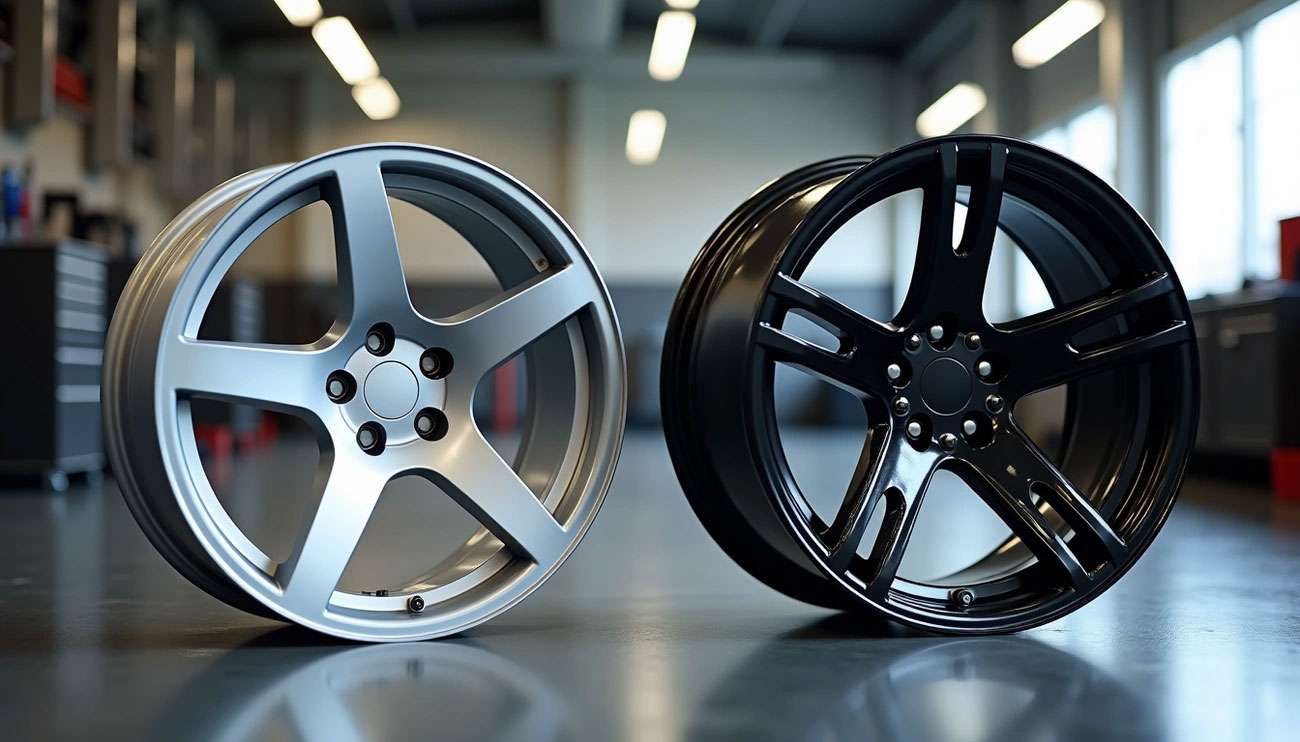
Quick answer: OEM wheels deliver guaranteed fitment, predictable ride quality, and factory-level corrosion protection—at a higher upfront price. Aftermarket wheels unlock more sizes, styles, and performance options—often at lower entry costs—but require careful attention to bolt pattern, offset, load rating, hub centricity, and hardware to avoid vibration, rubbing, or TPMS issues. If you want “zero-drama” factory feel, choose OEM; if you want style/performance and a tailored fit, choose aftermarket—installed the right way.
Fitment isn’t just diameter. It’s the full stack—bolt pattern, center bore, offset, load rating, width, brake clearance, and tire match. Get those right and the car feels OEM-solid. Miss on any single item and you can introduce vibration, steering pull, fender rub, or premature bearing and tire wear.
Not sure where to start? Use our Start with your vehicle flow to see wheels that fit your exact year, make, and model, then build a Wheel & Tire Package that’s mounted, balanced, and TPMS-ready.
Explore custom wheels, off-road wheels, and tuner wheels—or visualize styles on your car with our wheel visualizer.
Aftermarket often looks cheaper upfront but be sure to budget for the pieces that make the system work like OEM—quality lugs, hub rings (if required), TPMS, and an alignment if you change diameter/offset or go to a new tire size.
| Item | OEM (Est.) | Aftermarket (Est.) | Notes |
|---|---|---|---|
| Wheel set (4) | $1,200–$3,200+ | $700–$2,500+ | Construction, brand, and finish drive price more than size. |
| Lug hardware | Usually included | $30–$120 | Correct seat type and thread pitch are critical. |
| Hub-centric rings | N/A | $10–$40 | Only if wheel center bore is larger than hub. |
| TPMS (sensors/service) | $0–$320 | $0–$320 | Reuse or replace. We program/learn sensors as needed. |
| Mount/balance | $0–$160 | $0–$160 | Included with Wheel & Tire Packages. |
| Alignment (if needed) | $0–$140 | $0–$140 | Recommended when changing size/offset or after suspension work. |
OEM warranties are predictable but limited to factory designs. Quality aftermarket brands offer finish and structural coverage—be sure your wheels are installed with the right hardware and maintained correctly. Buying through Performance Plus Tire means expert fitment help and support after the sale.
No—properly sized and installed wheels won’t void a vehicle warranty. Issues caused by incorrect fitment or installation are not covered. Use the correct bolt pattern, offset, load rating, and hardware, and follow proper torque procedures.
Only if the wheel’s center bore is larger than your hub. Rings help center the wheel during installation to prevent vibration. Many modern aftermarket wheels are designed to be hub-centric for common applications.
Usually yes. We can transfer or provide compatible sensors and handle programming/learning. Keeping TPMS functional is a safety must, and in many regions it’s legally required.